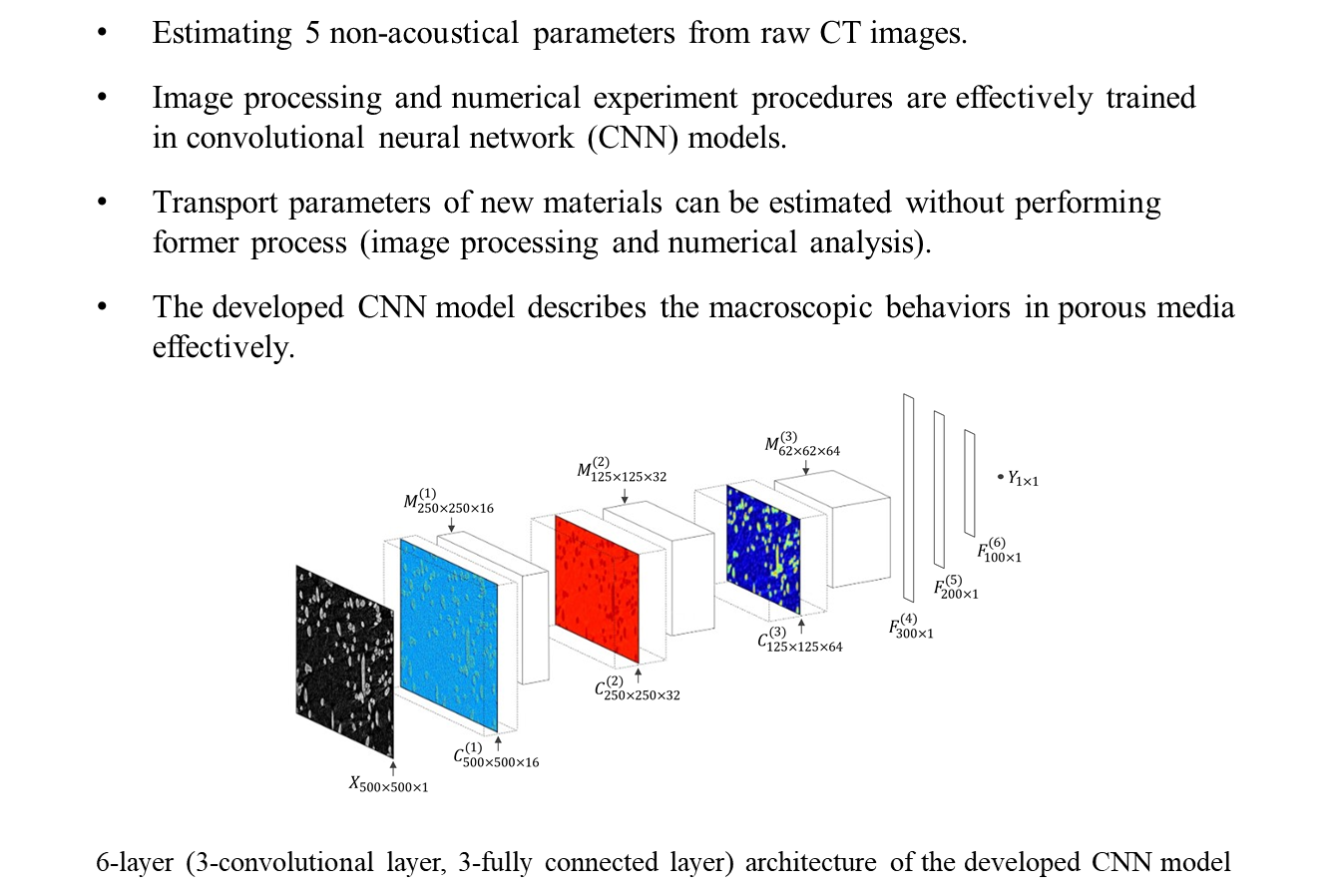AI Application in Sound Absorbing Material
Convolutional Neural Networks for estimating transport parameters of fibrous absorbent
This study proposes a method for estimating the transport parameters of fibrous materials from x-ray micro-computed tomography (CT) images using convolutional neural networks (CNNs). Two-dimensional (2-D) micro-CT images and numerically obtained transport parameters were used to train the CNNs; Stokes flow and potential flow were used to numerically obtain the transport parameters using geometrical models extracted from the raw CT images. Then, analogously to constructing a three-dimensional image of the fibrous material by stacking the 2-D slice images, the volumetric transport parameters of the fibrous materials were calculated using the parameters of each 2-D image predicted by the trained CNN models. The transport parameters of the fibrous volume predicted by the CNN models showed good agreement with the measured values. In addition, the sound absorption coefficient was calculated by applying both the predicted and measured transport parameters to the semi-phenomenological sound propagation model and compared with the measured sound absorption coefficient. The results of the study confirm the feasibility of predicting transport parameters of fibrous materials using a neural network model based on raw micro-CT images.

Artificial Neural Networks for estimating sound absorption coefficient of layered fibrous absorbent
The feasibility of a data-based artificial neural network (ANN) for the estimation of the sound absorption coefficient of a layered fibrous material is investigated in this study. The sound absorption coefficient of a four-layered fibrous material was estimated using a well-trained ANN model with only one nonacoustical parameter: the airflow resistivity. The results indicated that the ANN model exhibits a good correlation between the estimated and measured absorption coefficient. The training data sets were built
by carrying out experimental measurements using a two-microphone impedance tube with 230 combinations of four-layered fibrous materials. The results of the ANN are compared in three different cases with the transfer matrix method (TMM), which is the conventional method of estimating the sound absorption coefficient of multi-layers using several non-acoustical parameters. The sound propagation model in acoustical material for the TMM was used by two models proposed by Delany-Bazely (one
non-acoustical parameter) and Johnson-Champoux-Allard (five non-acoustical parameters). By comparing the estimated sound absorption coefficient from the ANN and TMM with measured values, it was demonstrated that the model developed in this paper gives more accurate results within the defined conditions. The results were compared in the frequency range of 3000–6000 Hz, and the error of the ANN model was less than 1.67%.

